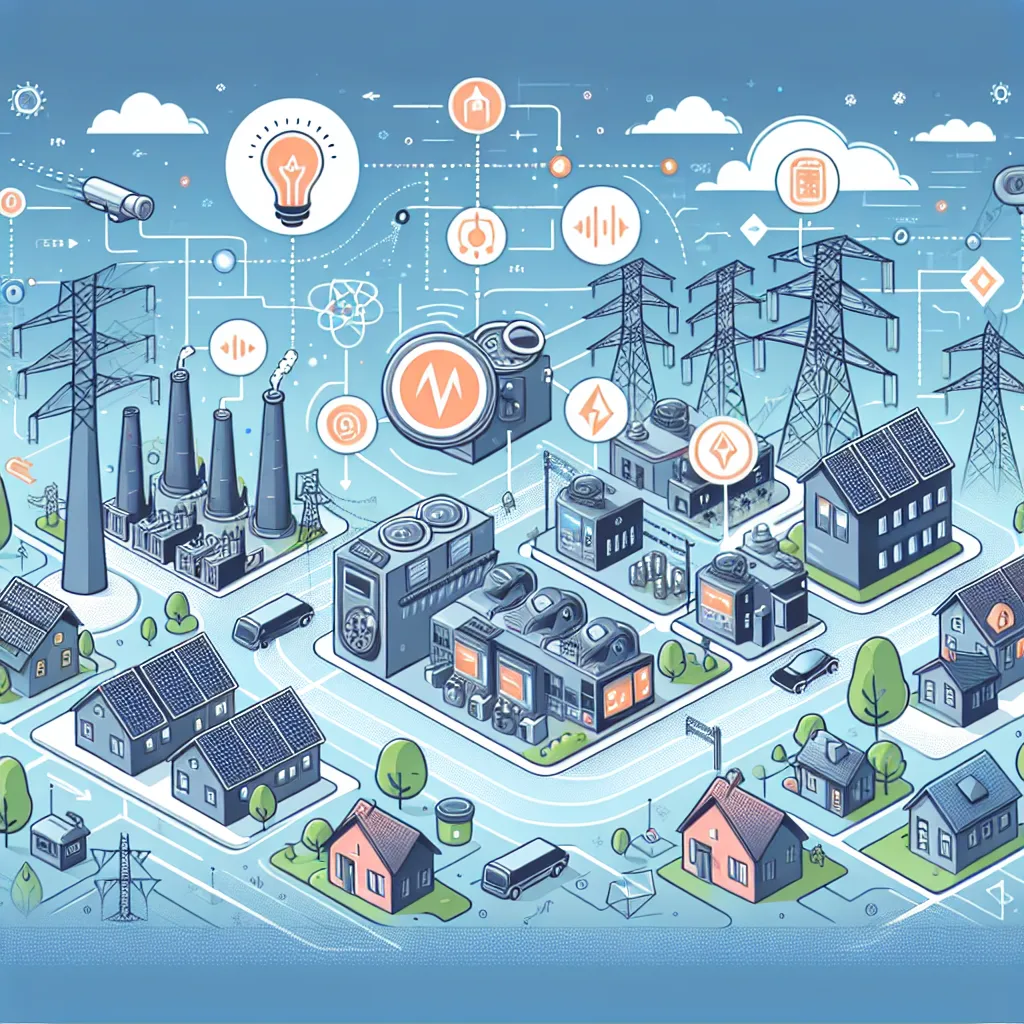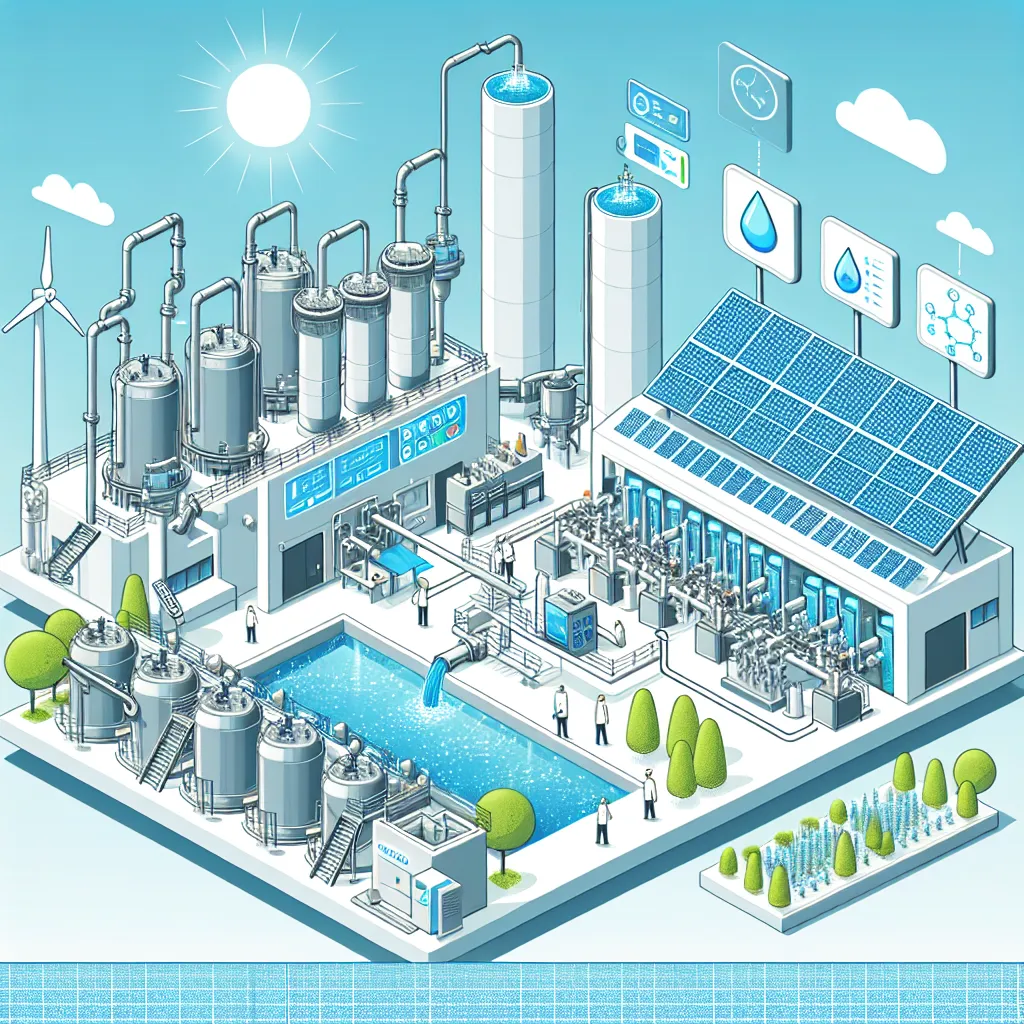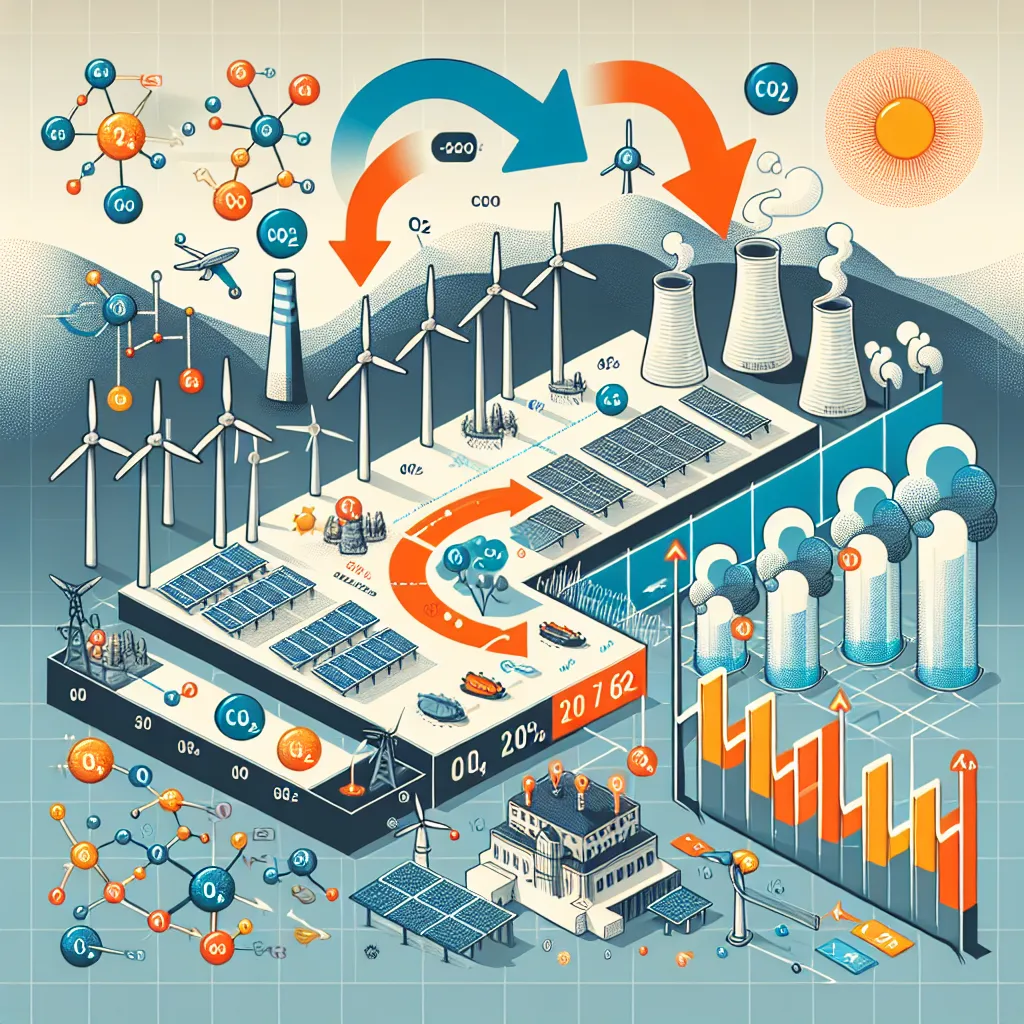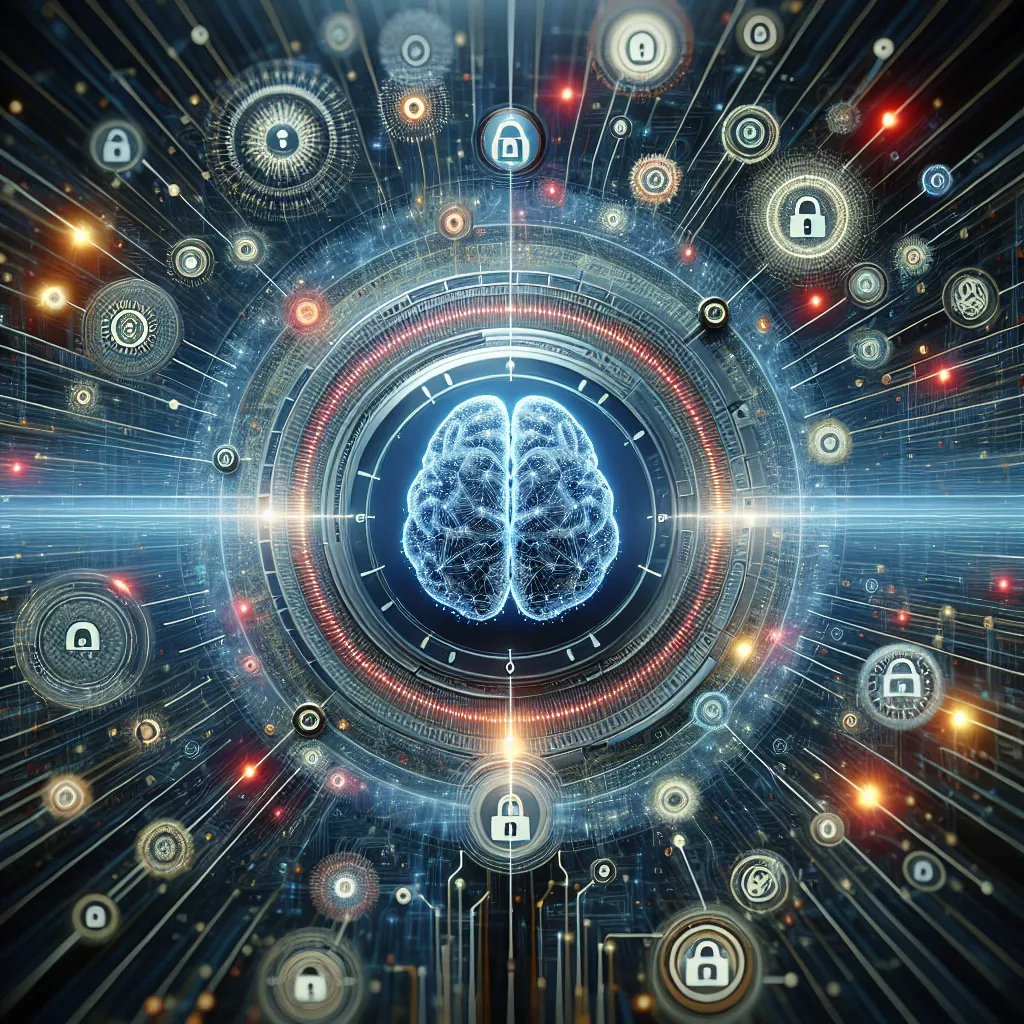Welcome to our IELTS Reading practice session focusing on the topic of smart grids and their impact on energy distribution. This article provides a comprehensive IELTS Reading test, complete with passages, questions, and answers to help you prepare for the exam while learning about this innovative technology.
Nội dung bài viết
 Smart Grid Technology
Smart Grid Technology
Introduction
Smart grids are revolutionizing the way we distribute and consume energy. This practice test will challenge your reading comprehension skills while providing valuable insights into how these advanced systems are reshaping the energy landscape. Let’s dive into the passages and questions to enhance your IELTS Reading abilities.
IELTS Reading Test: Smart Grids and Energy Distribution
Passage 1 (Easy Text)
Smart grids are revolutionizing the way we distribute and use electricity. Unlike traditional power grids, smart grids use digital technology to monitor and manage the transport of electricity from all generation sources to meet the varying electricity demands of end-users. These advanced systems incorporate sensors, meters, and digital controls throughout the grid to collect and analyze data in real-time.
One of the key benefits of smart grids is their ability to enhance energy efficiency. By providing detailed information about energy consumption patterns, smart grids enable both consumers and utility companies to make more informed decisions about energy usage. This can lead to significant reductions in energy waste and lower electricity bills for consumers.
Another important feature of smart grids is their capacity for two-way communication between utility companies and consumers. This allows for more responsive and flexible energy distribution, as the grid can quickly adjust to changes in demand or supply. For example, during periods of high demand, the grid can automatically reduce power to non-essential appliances in participating households to prevent overloads and blackouts.
Smart grids also facilitate the integration of renewable energy sources such as solar and wind power. These sources can be unpredictable, but smart grids can efficiently manage the fluctuations in supply by balancing them with other energy sources or storage systems. This capability is crucial for increasing the share of renewable energy in our overall energy mix and reducing reliance on fossil fuels.
Questions 1-7
Do the following statements agree with the information given in the passage? Write
TRUE if the statement agrees with the information
FALSE if the statement contradicts the information
NOT GIVEN if there is no information on this
- Smart grids use digital technology to monitor electricity distribution.
- Traditional power grids are more efficient than smart grids.
- Smart grids can help reduce energy waste.
- Consumers cannot interact with utility companies through smart grids.
- Smart grids can automatically adjust power distribution during high demand periods.
- Renewable energy sources are incompatible with smart grids.
- Smart grids can help reduce dependence on fossil fuels.
Passage 2 (Medium Text)
The implementation of smart grids is transforming the energy sector in numerous ways, extending far beyond mere efficiency improvements. One of the most significant impacts is the empowerment of consumers, who are no longer passive recipients of electricity but active participants in the energy ecosystem. Through real-time pricing information and advanced metering infrastructure, consumers can make informed decisions about their energy usage, potentially shifting their consumption to off-peak hours to take advantage of lower rates.
This shift towards a more dynamic and responsive energy market is facilitated by the bidirectional flow of information between utilities and consumers. Smart meters, acting as the cornerstone of this communication, provide granular data on energy consumption patterns. This wealth of information enables utilities to optimize their operations, from predicting demand more accurately to identifying and responding to outages more swiftly.
Moreover, smart grids are playing a crucial role in the decentralization of energy production. The traditional model of centralized power generation is giving way to a more distributed system, where microgrids and prosumers (producers-consumers) contribute to the overall energy supply. This decentralization enhances the resilience of the energy infrastructure, making it less vulnerable to large-scale blackouts and more adaptable to local needs.
The integration of electric vehicles (EVs) into the grid is another area where smart grids are proving invaluable. EVs are not just an additional load on the system; they can also serve as mobile energy storage units. Through vehicle-to-grid (V2G) technology, EVs can feed electricity back into the grid during peak demand periods, helping to balance the load and potentially earning their owners credits or payments.
However, the transition to smart grids is not without challenges. Cybersecurity concerns are paramount, as the increased connectivity and data flow create potential vulnerabilities. Ensuring the privacy of consumer data is also a critical issue that needs to be addressed. Additionally, the substantial investment required for upgrading existing infrastructure to smart grid standards poses a significant hurdle for many utilities and governments.
Despite these challenges, the potential benefits of smart grids in terms of efficiency, reliability, and sustainability make them a cornerstone of future energy systems. As technology continues to evolve and regulatory frameworks adapt, smart grids are set to play an increasingly important role in shaping a more resilient and environmentally friendly energy landscape.
Questions 8-13
Complete the sentences below.
Choose NO MORE THAN TWO WORDS from the passage for each answer.
- Smart grids allow consumers to become ____ in the energy ecosystem rather than passive recipients.
- The ____ of information between utilities and consumers is bidirectional in smart grid systems.
- Smart grids facilitate the ____ of energy production, moving away from centralized power generation.
- Electric vehicles can act as ____ in smart grid systems, helping to balance the load during peak demand.
- One of the main challenges in implementing smart grids is ensuring ____ to protect against potential vulnerabilities.
- The transition to smart grids requires significant ____ to upgrade existing infrastructure.
Passage 3 (Hard Text)
The advent of smart grids represents a paradigm shift in energy distribution, heralding a new era of efficiency, reliability, and sustainability in power systems. This transformation is underpinned by a complex interplay of technological innovations, regulatory reforms, and evolving consumer behaviors. At its core, the smart grid concept envisions an electricity network that leverages advanced information and communication technologies (ICT) to create a more responsive, adaptive, and intelligent energy infrastructure.
One of the most salient features of smart grids is their capacity for real-time monitoring and control. Through a network of sensors, smart meters, and advanced analytics, grid operators can gain unprecedented visibility into the state of the power system. This granular insight enables the implementation of sophisticated demand response programs, where electricity consumption can be dynamically adjusted based on grid conditions. For instance, during periods of peak demand or supply constraints, non-critical loads can be automatically curtailed or deferred, thereby mitigating the risk of system overload and reducing the need for costly peaking power plants.
The integration of renewable energy sources into the grid presents both opportunities and challenges for smart grid systems. The intermittent nature of solar and wind power necessitates more flexible and responsive grid management strategies. Smart grids address this challenge through advanced forecasting algorithms and energy storage solutions. By accurately predicting renewable energy generation and strategically deploying energy storage, grid operators can smooth out fluctuations in supply and maintain system stability. This capability is crucial for increasing the penetration of renewable energy in the overall energy mix and accelerating the transition to a low-carbon economy.
Another transformative aspect of smart grids is their potential to foster a more decentralized energy landscape. The traditional unidirectional flow of electricity from large centralized power plants to end consumers is giving way to a more complex, multidirectional network. This new paradigm accommodates distributed energy resources (DERs) such as rooftop solar panels, small-scale wind turbines, and energy storage systems. The proliferation of DERs is blurring the lines between energy producers and consumers, giving rise to the concept of prosumers – entities that both produce and consume electricity.
The cybersecurity implications of smart grids cannot be overstated. As the power system becomes increasingly digitized and interconnected, it also becomes more vulnerable to cyber threats. Protecting critical infrastructure from malicious attacks is paramount, requiring ongoing investment in robust security measures and protocols. Moreover, the vast amount of data generated by smart grids raises important questions about privacy and data ownership. Striking a balance between leveraging this data for grid optimization and protecting consumer rights is a complex challenge that policymakers and industry stakeholders must address.
The economic implications of smart grid deployment are profound and multifaceted. While the initial capital investment required for grid modernization is substantial, the long-term benefits in terms of improved efficiency, reduced outages, and deferred infrastructure investments are significant. Furthermore, smart grids are enabling new business models and market structures in the energy sector. Demand aggregators, for instance, can pool the flexibility of multiple consumers to provide valuable grid services, creating new revenue streams and enhancing system reliability.
As smart grids continue to evolve, their role in enabling a more sustainable and resilient energy future becomes increasingly apparent. By facilitating the integration of clean energy sources, empowering consumers, and optimizing system performance, smart grids are not just transforming energy distribution – they are fundamentally reshaping the entire energy landscape. The journey towards fully realized smart grid systems is complex and ongoing, requiring continued innovation, collaboration, and adaptive policymaking. However, the potential rewards in terms of energy security, environmental sustainability, and economic efficiency make this transformation both necessary and inevitable.
Questions 14-20
Choose the correct letter, A, B, C, or D.
-
According to the passage, smart grids primarily utilize:
A) Renewable energy sources
B) Advanced information and communication technologies
C) Traditional power plants
D) Manual control systems -
The ability of smart grids to adjust electricity consumption based on grid conditions is known as:
A) Real-time monitoring
B) Advanced analytics
C) Sophisticated demand response
D) System overload mitigation -
What challenge does the integration of renewable energy sources present to smart grids?
A) High implementation costs
B) Intermittent nature of supply
C) Lack of consumer adoption
D) Increased carbon emissions -
The term “prosumers” in the context of smart grids refers to:
A) Professional energy consumers
B) Entities that only produce electricity
C) Entities that both produce and consume electricity
D) Large-scale power plants -
What is described as a significant concern for smart grid security?
A) Physical attacks on infrastructure
B) Natural disasters
C) Cyber threats
D) Equipment failure -
According to the passage, smart grids enable new business models such as:
A) Traditional utility companies
B) Fossil fuel suppliers
C) Demand aggregators
D) Nuclear power plants -
The passage suggests that the transformation brought about by smart grids is:
A) Optional and easily avoidable
B) Necessary and inevitable
C) Temporary and reversible
D) Harmful to the environment
Answer Key
- TRUE
- FALSE
- TRUE
- FALSE
- TRUE
- FALSE
- TRUE
- active participants
- flow
- decentralization
- mobile energy storage units
- cybersecurity
- investment
- B
- C
- B
- C
- C
- C
- B
This IELTS Reading practice test on smart grids and energy distribution provides a comprehensive overview of how these advanced systems are transforming the energy sector. By working through these passages and questions, you’ve not only improved your reading skills but also gained valuable knowledge about an important technological advancement.
Smart grids are playing a crucial role in shaping the future of energy distribution, enabling more efficient use of resources and facilitating the integration of renewable energy sources. As you continue your IELTS preparation, remember that staying informed about current technological trends can be beneficial for various sections of the test.
For more practice on related topics, you might want to check out our articles on how renewable energy is powering developing nations and the impact of smart technology on city planning. These resources can help broaden your understanding of energy and technology topics, which are frequently featured in IELTS exams.
Keep practicing and expanding your knowledge, and you’ll be well-prepared for success in your IELTS Reading test!


